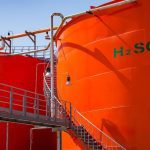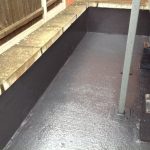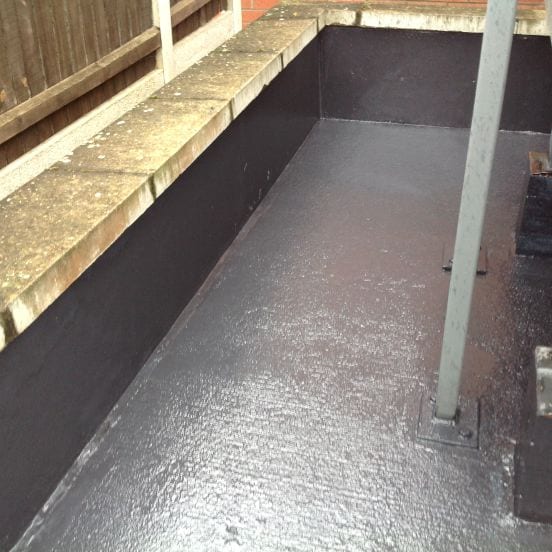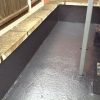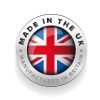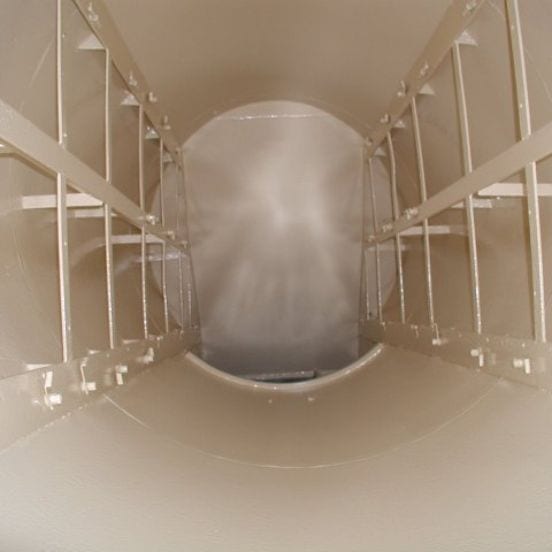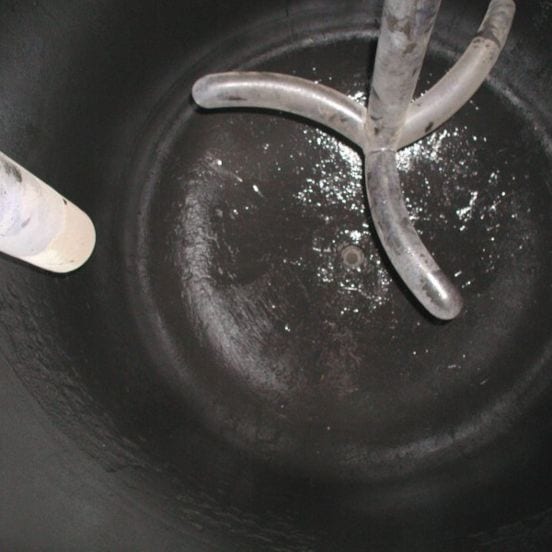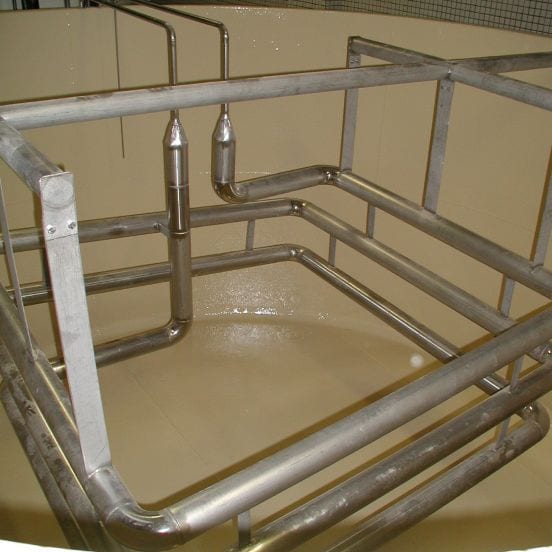Description
M-CHEM 300 - Acid Resistant Epoxy Novolac Coating
Is a high-build, solvent free Epoxy Novolac Coating, providing excellent resistance to a wide range of concentrated acids and industrial chemicals.
The material is suitable for a variety of applications including as a lining for bunding and secondary containment or as an internal lining for process equipment such as pressure vessels operating below 60°C.
M-CHEM 300 – Acid Resistant Epoxy Novolac Coating is proven to protect against Sulfuric Acid 98%, Hydrochloric Acid 36%, Phosphoric Acid 75% and Hydrobromic Acid 40%.
Typical Uses
- Acid Resistant lining for Process Columns
- As a Chemical Storage Tank Lining
- To protect Bunds & Containments from chemical attack
Please contact us to discuss your project before purchasing this material to confirm suitability.
Application Guide
- All oil and grease must be removed from the surface using an appropriate cleaner such as MEK or similar type solvent.
- All surfaces must be abrasive blasted to ISO 8501/4 Standard SA2.5 (SSPC SP10/ NACE 2) minimum blast profile of 75 microns using an angular.
- Once blast cleaned the surface must be degreased and cleaned using MEK or similar type solvent.
- All surfaces must be coated before gingering or oxidation.
Existing Concrete
- If the concrete surface is contaminated, pressure wash using clean water.
- Once the concrete is dry, lightly abrasive blast or scarify taking care not to expose the aggregate.
- Clean all dust and debris from the surface and take several moisture readings and prime with M-PRIME 100 – Low Viscosity Epoxy Concrete Primer or M-PRIME 104 – Damp Tolerant Concrete Primer dependant on moisture readings obtained.
- Apply M-PRIME 100 or M-PRIME 104 at a target wet film of 150 microns, allow to cure before overcoating.
- For very porous surfaces a second coat of primer may be required.
New Concrete
- Allow new concrete to cure for a minimum of 21 days. Lightly abrasive blast or scarify to remove any surface laitance.
- Clean all dust and debris from the surface and take several moisture readings and prime with M-PRIME 100 – Low Viscosity Epoxy Concrete Primer or M-PRIME 104 – Damp Tolerant Concrete Primer dependant on moisture readings obtained.
- Apply M-PRIME 100 or M-PRIME 104 at a target wet film of 150 microns, allow to cure before overcoating.
- For very porous surfaces a second coat of primer may be required.
Prior to mixing please ensure the following:
- The base component is at a temperature between 15-25°C.
- Do not apply the material when the ambient or substrate temperature is below 10°C or less than 3°C above dew point.
- Transfer the contents of the Activator unit into the Base container.
- Using a low speed electric paddle mixer, mix the 2 components until a uniform material free of any streaks is achieved.
- Once mixing is complete, use the mixed paste as soon possible.
Use all mixed material within 20-25 minutes at 20°C.
Brush & Roller
- Pour the mixed material into a paint kettle or paint tray (this will maximise the usable life).
- Stripe coat all edges, joints & corners.
- Once the stripe coat has cured and is capable of being overcoated, apply a basecoat at a target wet film thickness of 400-500 microns.
- Once the basecoat has cured sufficiently, (approximately 4 hours at 20°C) apply a topcoat at a target wet film thickness of 400-500 microns.
Airless Spray
Spray application should be carried out by airless spray using a 45:1 ratio pump with an attached hot water pump to heat the spray lines.
- The temperature around the spray lines should be kept around 25-35°C.
- Spray pressure of 3600psi and a tip size of 19-23 thou should be used.
- Use as short a line as possible to maintain product temperature (maximum 8 meters).
- Circulate the product for a short time to achieve temperature equilibrium.
- Stripe coat all edges, joints & corners.
- Once the stripe coat has cured and is capable of being overcoated, apply a basecoat at a target wet film thickness of 400-500 microns.
- Once the basecoat has cured sufficiently, (approximately 4 hours at 20°C) apply a topcoat at a target wet film thickness of 400-500 microns.
To enhance the properties of this material, post curing will be required.
- Allow the product to cure for at least 4 hours at 20°C.
- Raise the coating and substrate temperature progressively to 60 – 100°C for up to 8 hours.
Post curing will result in improved mechanical, thermal and chemical resistance properties.
| Appearance | Base Activator Mixed | Highly structured thixotropic liquid Amber liquid Thixotropic liquid |
| Mixing Ratio | By Weight By Volume | 4:1 3:1 |
| Density | Base Activator Mixed | 1.41 1.02 1.32 |
| Solids Content | 100% | |
| Sag Resistance | Nil at | 500 microns |
| Usable Life | 10°C 20°C 30°C | 50 minutes 25 minutes 12 minutes |
| Theoretical Coverage | Basecoat – minimum wet film thickness of 400 microns Topcoat – minimum 400 film thickness of 400 microns | 2.5 sqm /ltr 2.5 sqm/ltr |
| Cure Times at 20°C | Minimum overcoating time Maximum overcoating time Water/ sea water immersion Chemical immersion | 4 Hours 12 hours 4 days 7 days |
| Storage Life | Unopened and stored in dry conditions (15-30°C) | 5 years |
| Abrasion Resistance | Test to Taber CS17 Wheels/1 Kg load | 138mg loss/1000 cycles 0.18cc loss/1000 cycles |
| Adhesion | Tensile Shear to ASTM D1002 on abrasive blasted mild steel with 75 micron profile | 208 kg/ cm² (2950 psi) |
| Compressive Strength | Tested to ASTM D 695 | 984kg/cm² 13,950psi |
| Corrosion Resistance | Tested to ASTM B117 | 5000 hours |
| Flexural Strength | Tested to ASTM D790 | 871kg/cm² 12,300ps |
| Hardness | Shore D to ASTM D2240 | 85 |
| Heat Distortion | Tested to ASTM D648 at 264psi fibre stress | 20°C Cure 52°C 100°C Cure 75°C |
| Heat Resistance | Suitable for use in immersed conditions at temperatures up to: Suitable for use in dry conditions at temperatures up to dependant on load: | 60°C 200°C |
| Acetic Acid 10% at 30˚C Ammonia Hydroxide 30% at 45˚C Benzene 100% at 35˚C Butanol 100% at 40˚C Chromic Acid 10% at 40˚C | De-ionised Water at 40˚C Ethanol 100% at 45˚C Hydrobromic Acid 40% at 30˚C Hydrochloric Acid 36% at 35˚C Nitric Acid 10% at 30˚C | Phosphoric Acid 75% at 45˚C Steam out at 180˚C Sulphuric Acid 98% at 40˚C Toluene 100% at 40˚C Xylene 100% at 40˚C |
Please contact us to discuss your project before purchasing this material to confirm suitability.


